Speeding up that loadout process, however, requires careful attention to detail and analysis of all parts of the process from start to finish.
“In one pass, you can see the different readers and steps of the process, so if you dig deeper, you can always find where the problem is and what to do in order to serve our customers faster,” says Luis Garza, business evolution manager at Cemex Research Group. “We’re able to see the dashboard with information capturing the timing and loading stations, so based on that, we’ve been able to identify bottlenecks and explore new technologies to make the process faster.”
Production planning
While the in-and-out truck timing is the main focus of the loadout process, what’s perhaps understated is the diversity of material mixes this automation process can provide for Cemex customers.
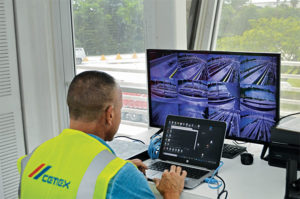
“We can blend almost an infinite number of products here,” Coppock says. “We have many, many products. We’re using screens, sizing out materials for the different finished products. All of our finished products are fed to the loadout system through feeders that drop down to a conveyor and tunnel those products.”
The available material, of course, is dictated by on-site production. FEC Quarry features a “scoreboard” displaying how many dump trucks are coming through per hour, which, in turn, has a direct correlation to on-site production volumes.
“If we load too quickly, we’ll back all the trucks up, we’re going to have a bunch of blackbelt time and then we’re running the plant just to run it without any material, and that’s expensive,” Coppock says. “That’s why the scoreboard is important, because we know how well we’re spaced. What you’ll see during production is, as the truck dumps, one is pulling up ready to dump in the hopper. It’s that close. We bring the right number of trucks based on which pits we’re loading from so we have exactly what we need without going over, because it does cost to have the truck sitting as well.”
Based on production, Cemex can update the Cemex Go Pick-up app to alert customers of available material on site for their orders.
“We can actually choose which products show up in the app just by toggling them on and off, so we give the information to the customer,” Coppock says. “It’s updating almost [in] real time.”
Added benefits
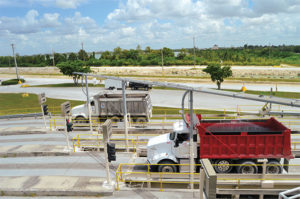
In addition to efficiency and safety, this automated process assists with labor and customer service.
“It does [help with labor] a bit, but it also allows us to focus on the issues,” Coppock says. “If everything is in order, the truck can just continue through the process. Any customer concern or issue, we can get to that a lot quicker. We know that when we’re responding to something that needs a manual intervention, it’s because that customer needs us to look into it and we can actually respond to those a lot more quickly now.”
That communication between Cemex and its customers is initiated at the scale house, where each customer enters and exits and oversight of the entire loadout process is conducted.
“We have a speaker so we can talk back and forth to the driver,” Coppock says. “We’ll see what [the problem] is and we can tell them to pull around. Maybe they’re overweight, maybe there’s an issue with the order or sometimes we have a customer that might go on credit hold or something like that. We try to resolve that before we send it out the gate.”
Embracing technology
One positive sign for the future is that Cemex Go Quarry Link program has proven to be beneficial for both Cemex and its customers.
“The drivers are embracing it,” Coppock says. “We have a quick conversation, [explain] we want to put the tag on the truck, here are the benefits and we’ll help you get in and out [and] where you need to go more quickly.”
Since debuting at FEC Quarry, Cemex Go Quarry Link has been rolled out at other Cemex operations across the country.
For new customers or those unfamiliar with Cemex Go Quarry Link or the company’s streamlined loadout process, the reception has been largely positive.
“We’re seeing drivers who don’t have the tags coming upstairs and saying ‘hey, do you have a tag I can get on my truck?’” Coppock says. “That’s how we know it’s working, because the drivers are asking for it themselves.”

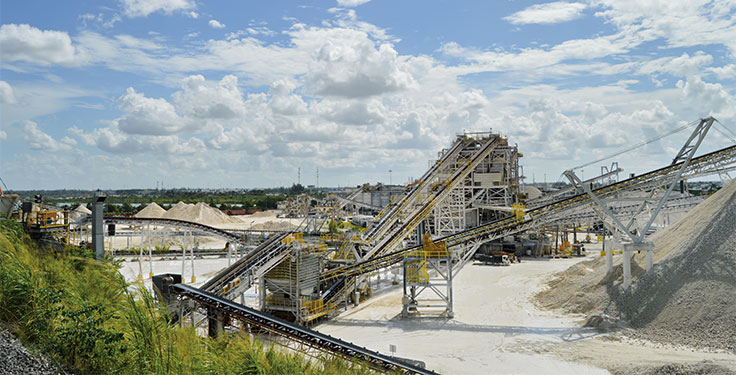
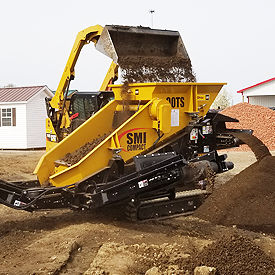
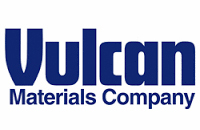

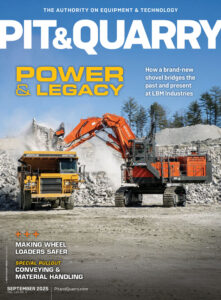

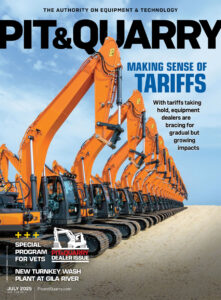

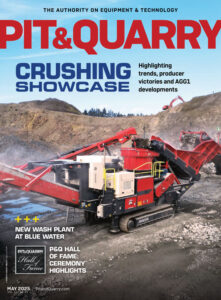

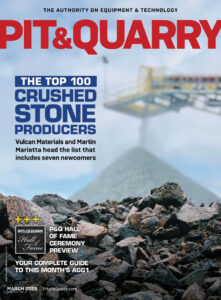
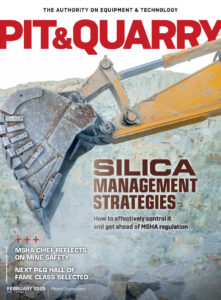
One Comment “How Cemex’s new loadout technology is transforming FEC Quarry”
Comments are closed.